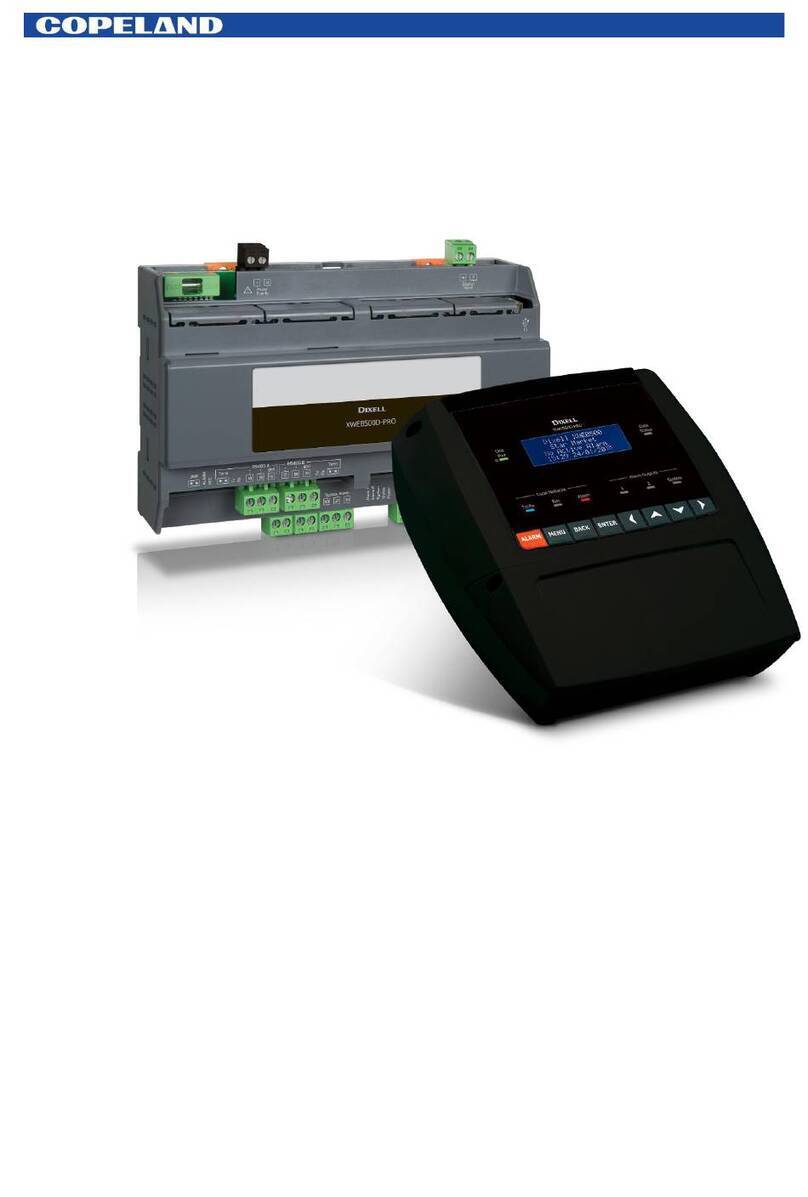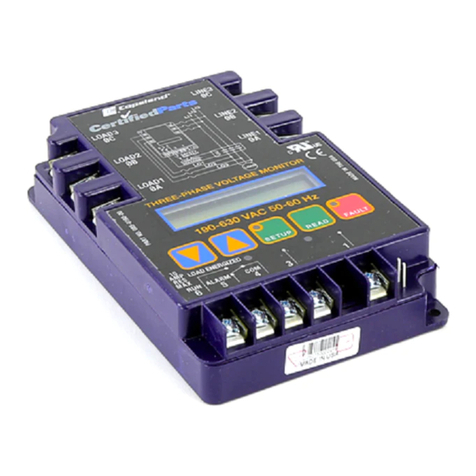
10
4.2.2 Equipment Rooms
In equipment rooms, the gas detectors can be installed as follows:
• Position the gas detectors near areas with a high concentration of refrigerant, such as compressors, cylinders, storage tanks,
pipes and conduits. Avoid vibrating surfaces.
• Position the gas detectors near mechanical parts such as pressure reducers, valves, flanges, joints (brazed or mechanical) and
pipes. In particular, above or below these in relation to the type of gas (see below).
• Position the gas detectors around the perimeter of the room, so as to completely surround the equipment.
• Position the gas detectors in all enclosed areas (stairwells, pits, enclosed corners, etc.) where pockets of stagnant gas may form.
• Position the gas detectors near ventilation air flows, both natural and mechanical (if present).
• Do not place the gas detectors too close to areas with high-pressure gas, to allow this to spread in the space around the gas de-
tector. Otherwise the device may not detect the refrigerant leak if the flow of gas is too fast.
4.2.3 Cold Rooms
In cold rooms, position the gas detectors near the return air flow from the evaporator, ideally on a side wall, but not
directly in front of the evaporator.
Where there are several evaporators, it may be possible to use one gas detector for every two evaporators if their
positioning allows.
Finally, position the gas detectors near mechanical parts or joints such as valves, flanges, and pipes, avoiding areas with
high-pressure gas.
4.2.4 Chillers
Measuring leaks on outdoor chillers is generally more difficult, given the highly variable air flow.
Generally, it is recommended to install the gas detectors near the compressor, as this is the place where refrigerant
leaks are most likely to occur. In particular, check if it is possible to install the gas detector inside the closed unit near the
compressor, where gas is more likely to stagnate. However, avoid vibrating surfaces or surfaces that are difficult to access
for maintenance.
It is also recommended to install gas detectors along the ventilation system, especially in the event of low or variable air
flow speeds.
4.2.5 Air Conditioning - Direct VRF/VRV Systems
In air-conditioned buildings, it is recommended to install at least one gas detector in each room, identifying the areas
of greatest risk, such as air flows from ventilation systems and heating systems such as radiators. In these spaces, the
refrigerant gas is usually denser than air consequently, the gas detectors should be installed close to the floor.
Also consider installing the gas detector in ceilings or false ceilings, if not adequately sealed. Do not install the gas
detectors underneath mirrors/washbasins and inside bathrooms.
Do not install the gas detectors near sources of steam.





























